
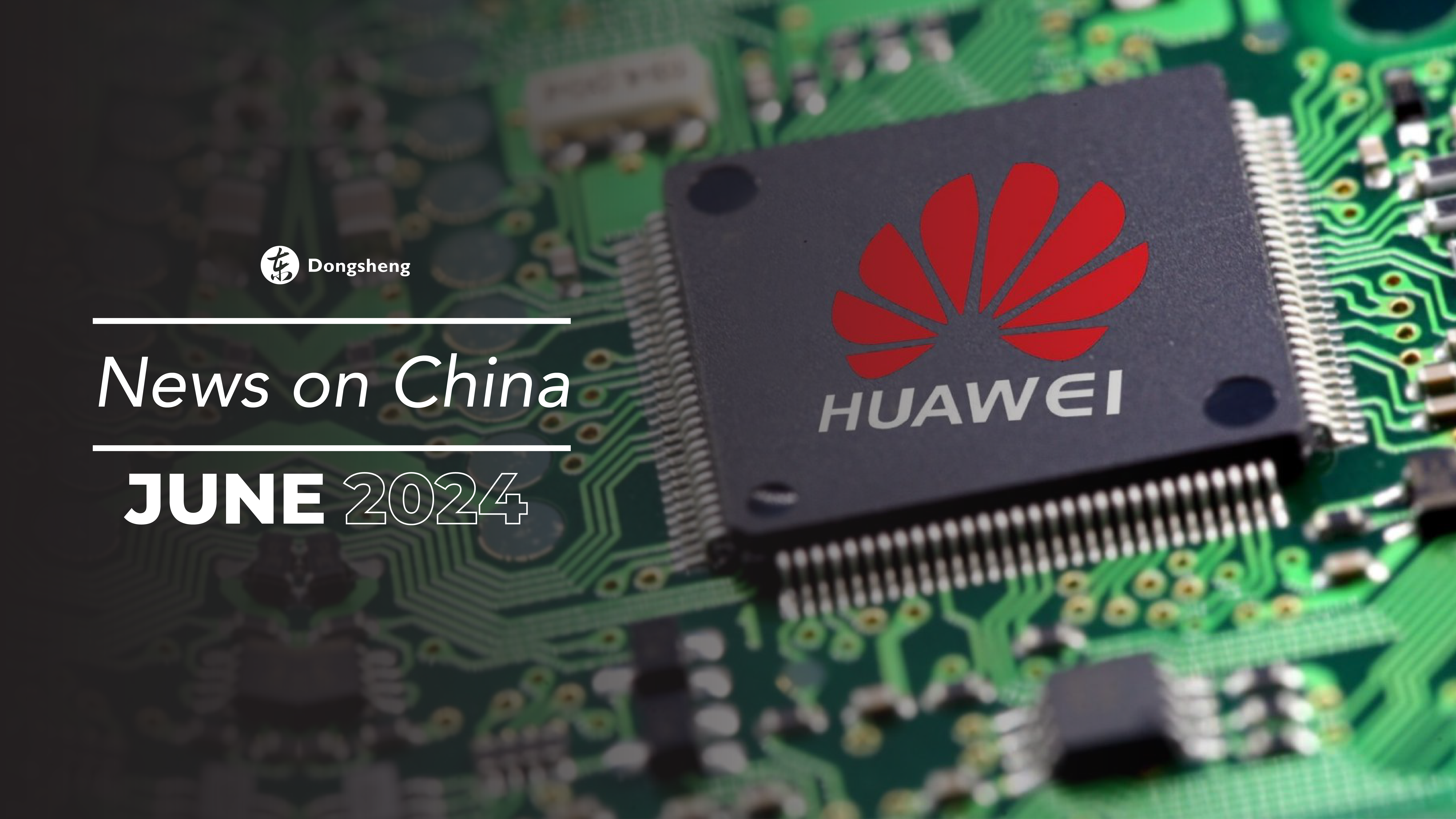
Here’s a video of Chinese people singing “Amani” (1991) by Beyond, a popular Chinese rock band from Hong Kong. The title of the anti-war anthem means “peace” in Swahili and is sung here in solidarity with Palestine. On social media, viewers left solidarity messages in the bullet comments.
If you don’t have a lot of time, this is what you should know:
- China’s semiconductor industry adapts to sanctions and grows stronger
- European Union increases pressure on China’s electric car industry
- World’s first patient cured of diabetes
- Gaokao students showing their solidarity with Palestine
China’s semiconductor industry adapts to US unilateral sanctions and grows stronger: the case of Huawei
Since the United States began its crusade against the Chinese semiconductor industry, it has steadily increased sanctions and tariffs on Chinese companies, even sanctioning or forcing non-Chinese companies, such as the Dutch ASML, to stop selling lithographic equipment to China.
One of the hardest-hit companies has been Huawei. In 2020, it was forced to sell one of its main smartphone brands because of a lack of chips. More than a dozen developed countries excluded it from 5G contracts, its revenue fell 30% in 2021, and net profits plummeted 70% in 2022. In May this year, US regulators revoked a permit allowing Intel and Qualcomm, two US technology groups, to sell Huawei chips.
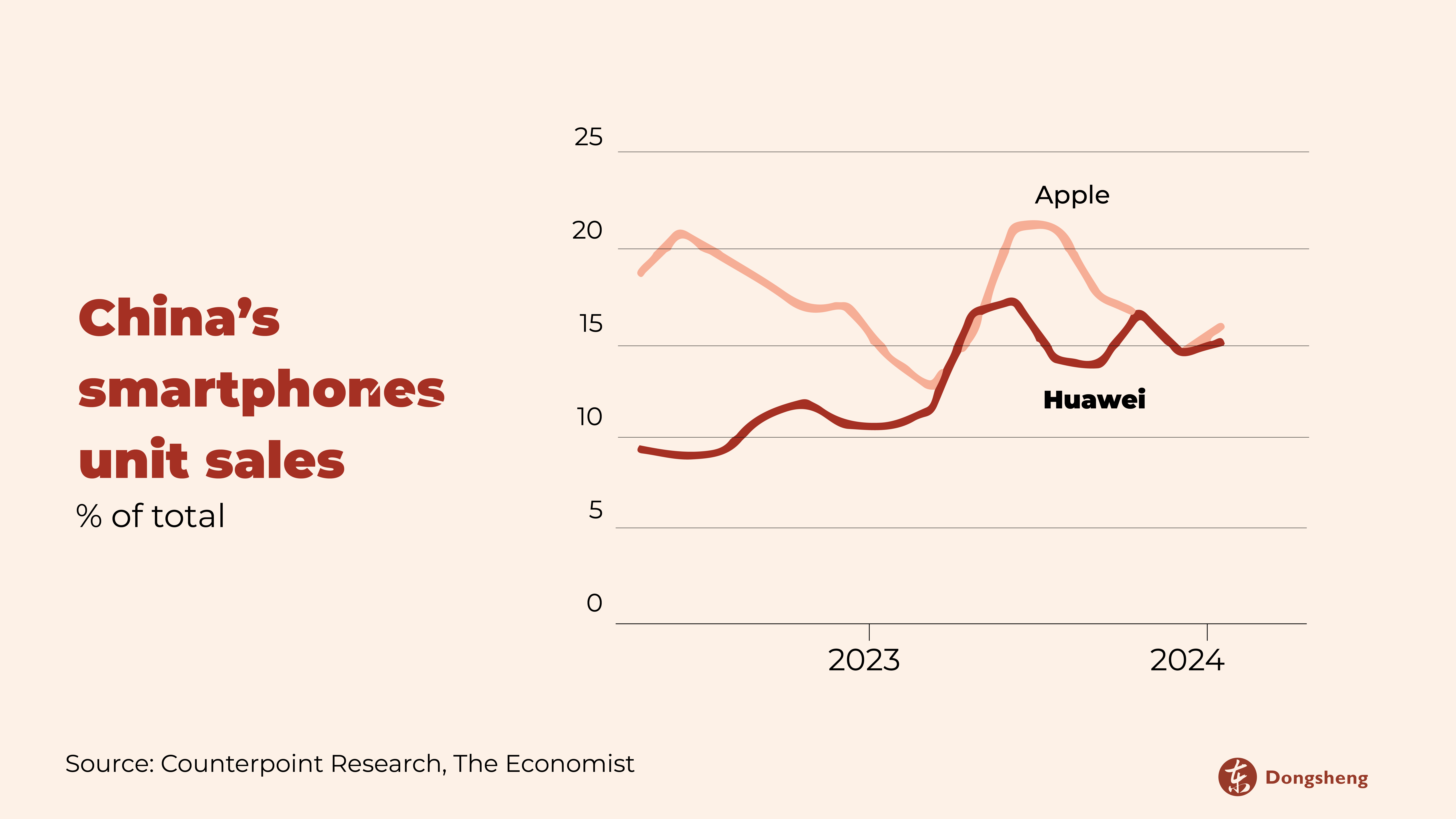
However, as The Economist reported, the Western sanctions created an opposite effect than intended. In this adverse context, Huawei began to replace the foreign technology used in its products with parts and software produced domestically, thereby increasing its resilience to Western sanctions, increasing its sales, and returning to the cell phone market.
Some 114,000 of the company’s employees, more than half of the total, work in research and development. The company has replaced 13,000 foreign-made parts with Chinese ones. While US sanctions have prevented Huawei from investing in other areas, they have also stimulated rapid development of Huawei’s intellectual property and pushed it to diversify into new lines of business.
About 70% of the components (by value) of the Mate60 Pro+, a smartphone launched in September, are made in China. Now, Huawei went from having 9% of the smartphone market share in the first three months of 2023 to 15.5% in the same period of 2024.
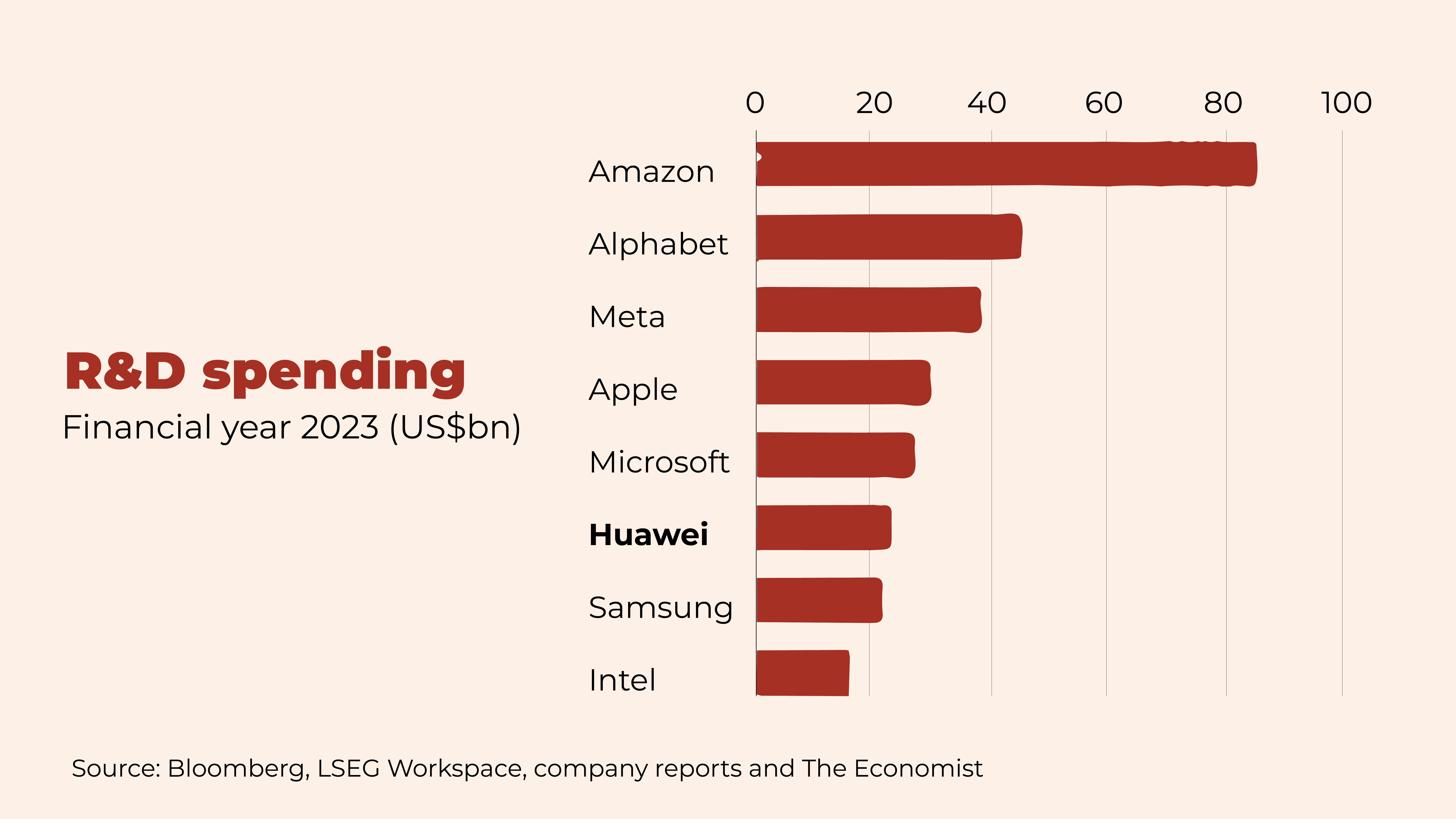
Huawei also manufactures watches, televisions, and control systems for Chinese electric cars. In the first quarter of this year, net profits rose 564% year-on-year to 19.7 billion yuan (US$2.7 billion ). Revenue from consumer devices grew by around 17% in 2023, thanks mainly to its new smartphones.
China achieves two major scientific breakthroughs
- Successful mission returns with samples from the far side of the moon
- On June 1, the Chang’e 6 landed on the moon’s far side, making it China’s fourth successful lunar landing. The robotic mission returned to China on June 25, carrying 2kg of lunar material from the South Pole-Aitken (SPA) basin — a historical first. The SPA samples dating to 4.26 billion years ago could give important insights into the solar system’s early history. The probe also planted a Chinese national flag on the moon, made from a special stone that could last 10,000 years.
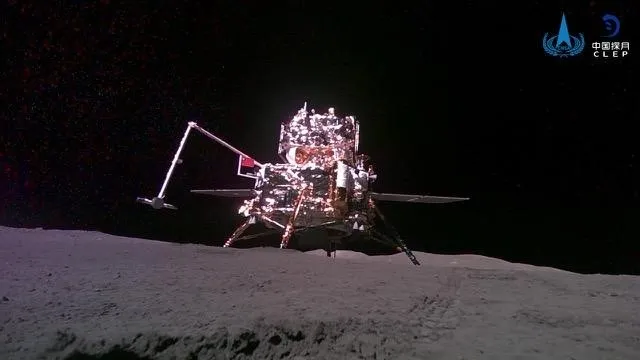
Chang’e 6 lander on the moon’s far side, snapped by the mission’s minirover [CNSA/CLEP]
- World’s first patient cured of diabetes
- Using cell therapy, a 59-year-old Chinese man was cured of type 2 diabetes after receiving a cell transplant in 2021, followed by gradually reduced insulin doses. China faces a serious diabetes problem, which impacts over 140 million people (or 17.7% of the global total), with over 40 million of them receiving lifelong insulin. Published in the Cell Discovery Journal, this medical breakthrough was made by a team of Shanghai-based doctors and researchers including the Shanghai Changzheng Hospital and the Centre for Excellence in Molecular Cell Science under the Chinese Academy of Sciences.
Brazil and China issued a roadmap for peace in Ukraine in a joint communiqué
In late May, Wang Yi, China’s top diplomat, met with Celso Amorim, special advisor to the president of Brazil, in Beijing. Following the meeting, China and Brazil issued a six-point consensus for the political settlement of the Ukraine crisis. The communiqué calls on all relevant parties to observe three principles: no expansion of the battlefield, no escalation of fighting, and no provocation, and states that “dialogue and negotiation are the only viable way out of the crisis.”

[Xinhua]
In mid-June, a peace conference was held in Switzerland, which was neither attended by Russia (as it was not invited) nor by China. Brazil attended as an observer but did not sign the final document, nor did several major Global South countries, like India, Indonesia, Saudi Arabia, UAE, South Africa, and Mexico.
Despite the calls for peace and the conference, which, as expected, did not bear much fruit, the US is expected to announce an additional US$150 million in military aid for Ukraine.
European Union increases pressure on China’s electric car industry
The European Commission announced in June that it would raise import tariffs on Chinese electric vehicles to 38.1%. Last year, the European Union launched an anti-dumping investigation accusing China of subsidizing its electric car industry and fostering unfair competition. Electric vehicle manufacturers cooperating with the investigation will face an average tax of 21%, while those that did not will face one of 38.1%. Non-Chinese companies that produce some electric vehicles in the country, including EU-based ones such as BMW, will also be affected. Germany has opposed EU tariff increases on Chinese electric vehicles, as its automakers would be hit the hardest. In May, the United States raised tariffs on Chinese electric cars from 25% to 100%.
According to analysts interviewed by the Financial Times, even with the tariffs, Chinese EVs are still more competitive than European ones. BYD might see its profit margins cut (to 8%), but it will still be more profitable than its domestic operations.
For its part, China opened an anti-dumping investigation on imported pork and its by-products from the European Union. In 2023, it imported US$6 billion worth of pork.
China and the European Union are holding talks to increase consultations on the EU’s anti-subsidy investigation and try to curb escalating trade tensions.
Australia-China trade hits new records after normalization of relations
China’s Premier Li Qiang paid a four-day visit to Australia in June, where he toured mining and wine-growing regions and met with his Australian counterpart Anthony Albanese. At a press conference, they announced reciprocal visa-free travel for Chinese and Australians, among other things.
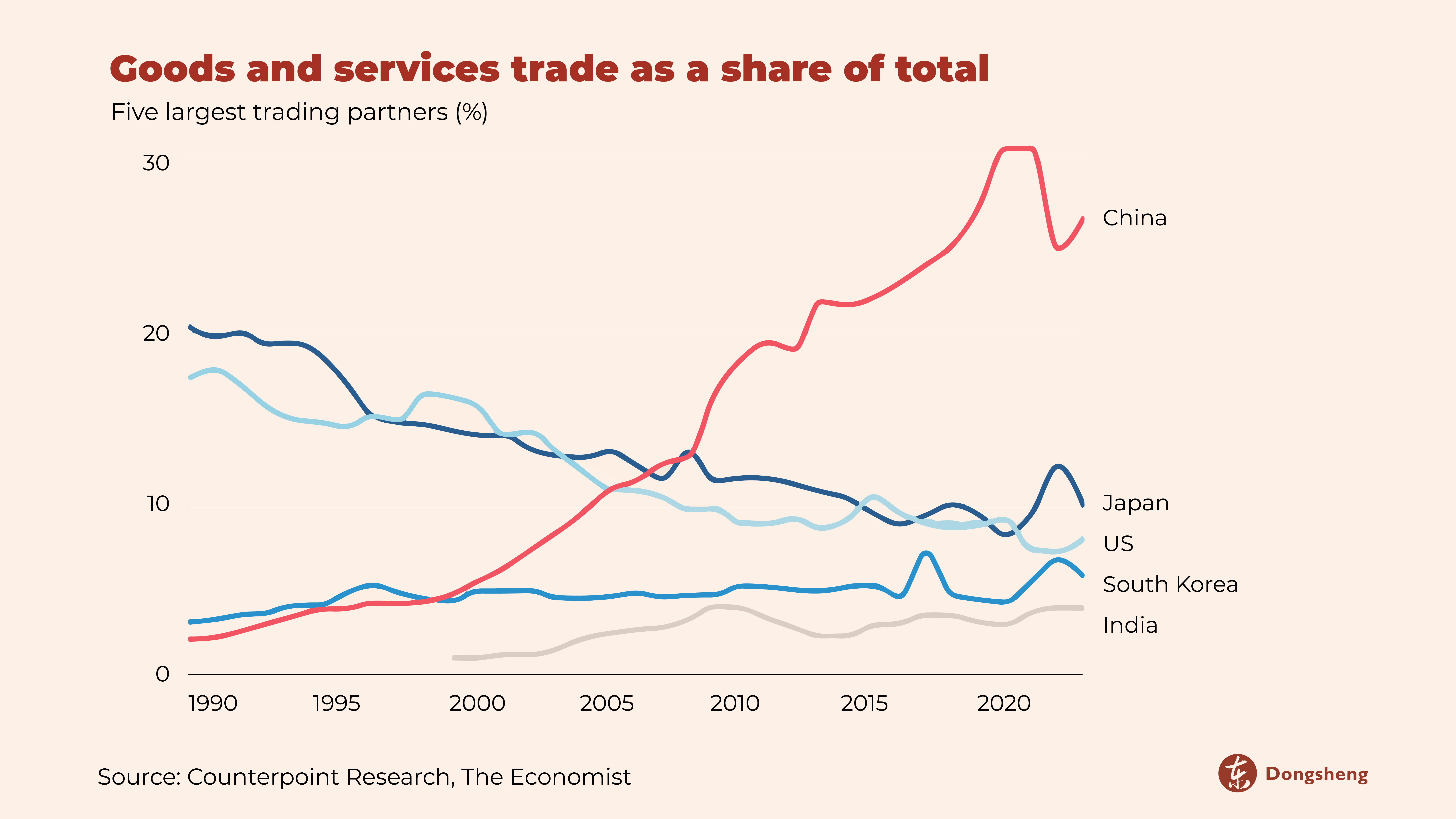
Bilateral trade totaled US$145 billion in 2023, the highest level in history, surpassing even the record of 2019, the last year before the outbreak of the pandemic and the imposition of tariffs and sanctions. The recovery has been driven in particular by rising prices for iron ore, Australia’s most important export, and a rebound in travel and tourism.
Reuters investigation alleges US Army operation to discredit Chinese vaccines to the Philippine public
At the height of the COVID-19 pandemic, the US military launched a clandestine campaign, focused primarily on social media, to cast doubt on the efficacy and generate fear about Chinese vaccines. This campaign began in 2020 and ran through mid-2021, reaching beyond Southeast Asia and tailoring to local audiences in Central Asia and the Middle East.
In 2019, Trump authorized the Central Intelligence Agency (CIA) to launch a covert campaign – continued under Biden – on Chinese social media with the goal of turning Chinese public opinion against its government. As part of that effort, a small group of agents used fake online identities to spread derogatory narratives about Xi Jinping’s government.
The Reuters investigation focuses on the details of the campaign in the Philippines. In that country, fake news about China found fertile ground in an already vaccine-susceptible population. Of the 114 million Filipinos, only 2.1 million were fully vaccinated. They also reinforced the resentment of part of the Filipino population towards China over the maritime disputes between them. Most recently, the Chinese Coast Guard intercepted Philippine vessels that had illegally entered waters near China’s Ren’ai Jiao (also known as the Second Thomas Shoal).
China’s nuclear industry continues to make progress and seeks to break through internationally
According to data from the US Energy Information Administration and the International Atomic Energy Agency, China’s nuclear plant capacity has more than doubled over the past decade.
As of April this year, China had 55 reactors with an installed capacity of 53 gigawatts, up from less than 20 GW in 2014. The US remains the world leader, with 94 reactors and an installed capacity of 96 GW. However, China is building new reactors faster than any other country. It has 26 reactors under construction, with an installed capacity of about 30 GW. Beyond its original goal of increasing the country’s energy security, expanding nuclear power is increasingly important in reducing greenhouse gas emissions.
Last year, nuclear power accounted for about 5% of China’s electricity generation. According to the China Nuclear Power Association, this contribution should increase to around 10% by 2035 and 18% by 2060.
Furthermore, China’s first nuclear power steam supply project for industrial use became operational in June. Called Heqi No.1, it is located in Lianyungang, Jiangsu province, in eastern China. Its annual supply of clean carbon steam can reach up to 4.8 million tons, equivalent to reducing standard coal burning by 400,000 tons per year.

China’s first industrial-use nuclear energy steam supply project, Heqi No.1 in Lianyungang, Jiangsu Province [CNNC]
The steam produced by nuclear power can be used in chemical manufacturing, greatly reducing the use of standard carbon and carbon emissions while helping companies reduce costs and increase efficiency.
In 2023, Chinese-made reactors came online at Paradise Point in Karachi, Pakistan, representing China’s first nuclear exports. Over the next decade, China plans to build and finance reactors in Asia, the Middle East, and Africa.
33 high-ranking officials investigated or sanctioned in anti-corruption efforts this year
According to official announcements from the CPC Central Committee, the senior Chinese officials are under investigation or have already been convicted, meanwhile departments nationwide are conducting Party discipline education.
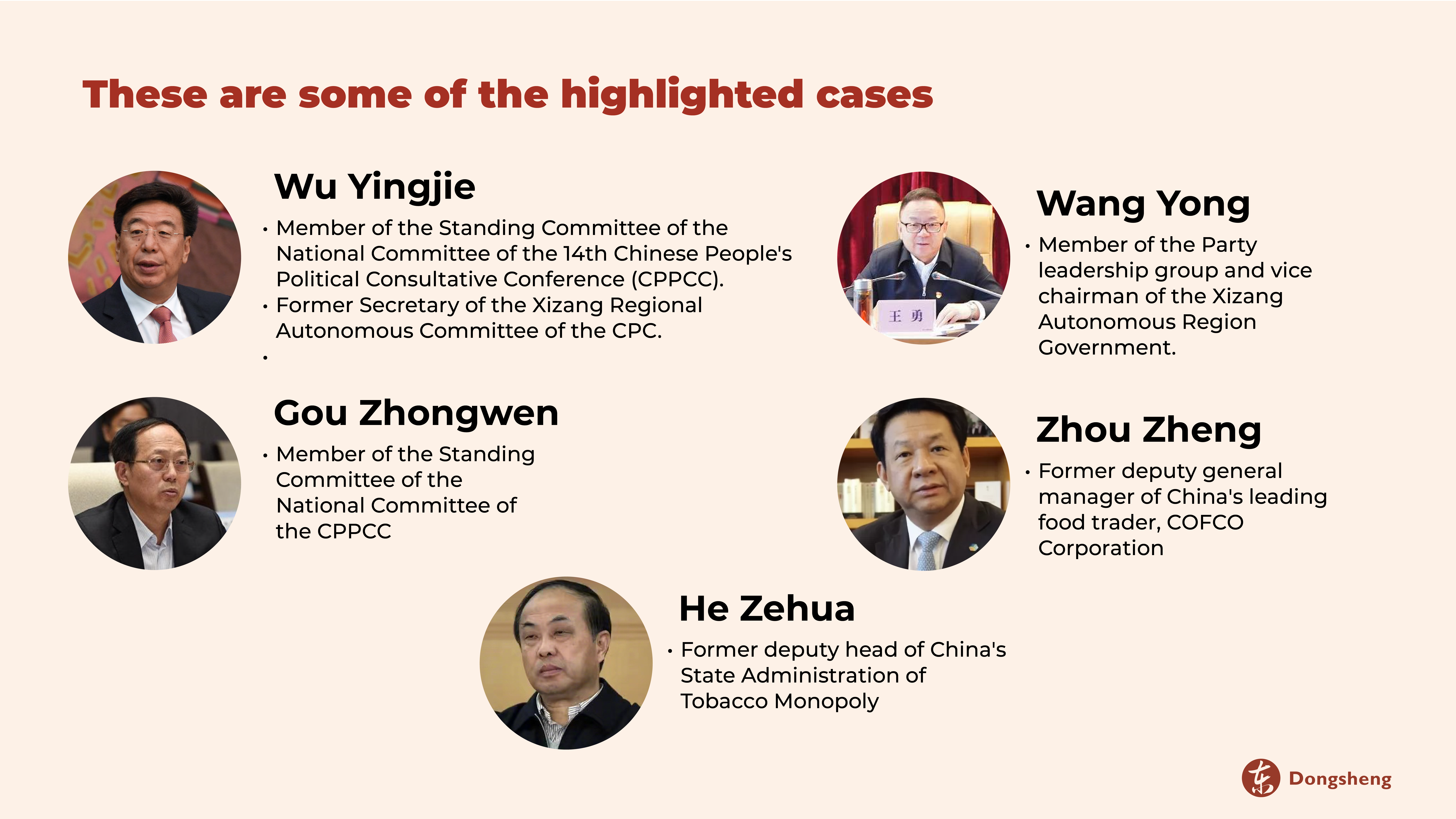
New regulations to combat cyberbullying following several suicide cases
The Cyberspace Administration of China (CAC), China’s top Internet watchdog, issued new regulations aimed at combating cyberbullying, following a proposal by delegates to this year’s Two Sessions and several suicide cases that sparked public concern.
The regulations refer to cyber violence as “text, images, audio, and video” that are “insulting, slanderous, defamatory, incite hatred, threaten, violate privacy, and ridicule, degrade, and discriminate against others, affecting their physical and mental health.”
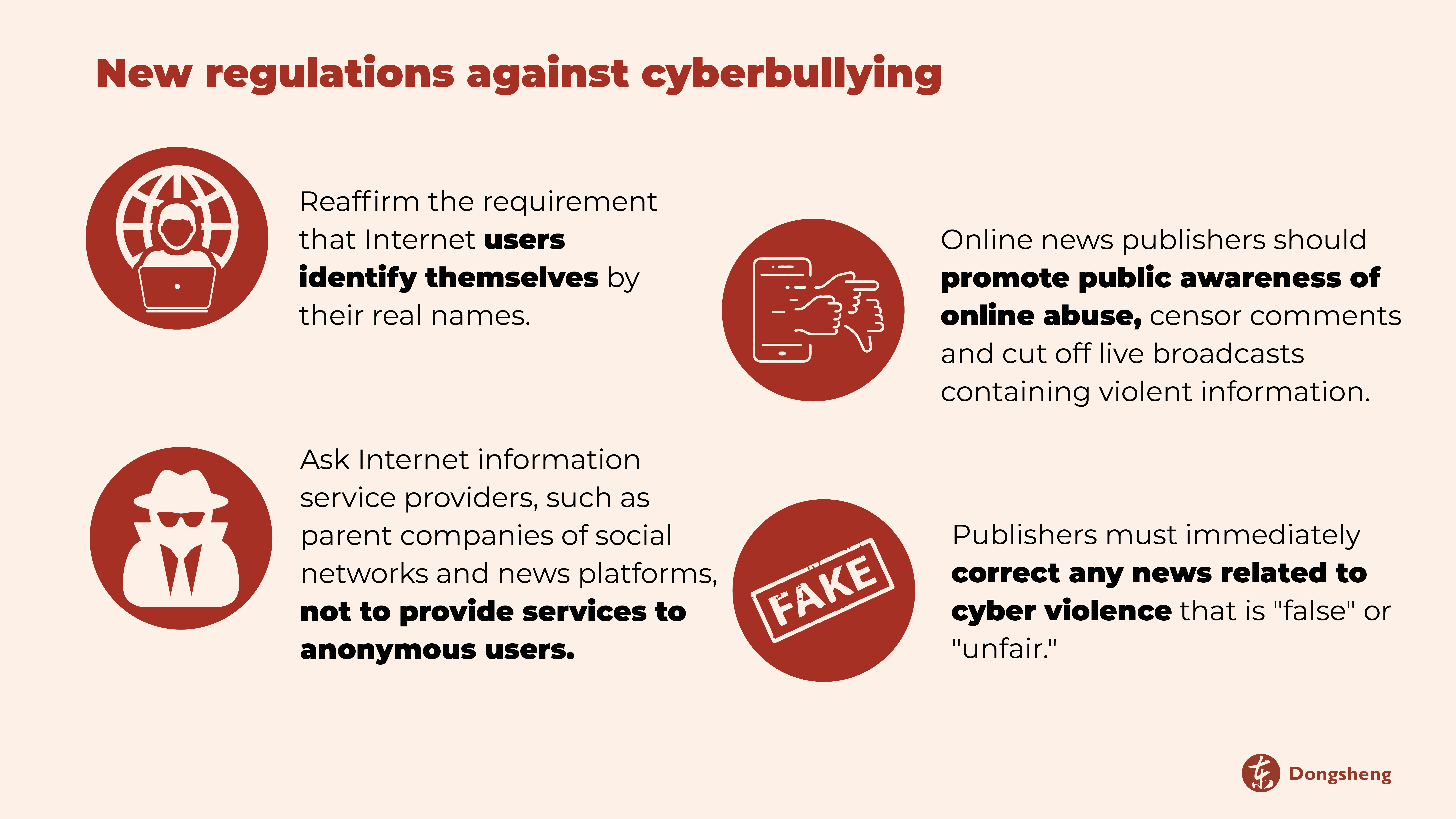
China does not yet have a specific anti-cyberbullying law. It regulates online violence through guidelines issued by various government departments and scattered provisions in other laws.
Combining anti-desertification with zero-carbon and food security initiatives
China has the largest area of desertified land in the world, totalling 300 million hectares and impacting the lives of 400 million people. As part of the global goal to reach zero net land degradation by 2030, China has treated over 22 million hectares of sandy land over the past decade. Meanwhile, 32 million hectares of new forests have been created, in addition to restoring 85 million hectares of degraded grasslands.

Rice field in Daleng Town of Zhangwu County, Fuxin City, Liaoning Province, June 14, 2023 [Xinhua/Pan Yulong]
Some innovations in combating desertification has included turning deserts into fertile areas. In the Taklimakan Desert in the Xinjiang Uighur autonomous zone, the first wheat harvest of 400 hectares is underway, with yields exceeding 250 kg per mu. In the same region, the Tarim Desert Highway is home to the country’s largest solar irrigation project, with over 86 solar power stations (3.5 mW) and 109 wells that help replace diesel-powered generators for pumping water. This project has helped reduce greenhouse gas emissions by 3,410 tons annually.
Chinese women work more unpaid labor per day than men, while voluntary work is about the same for men and women
Inner Mongolia University and Southwestern University of Finance and Economics conducted surveys with 20,500 households across 29 regions. Like countries around the world, Chinese women spend an average of 2.94 hours of unpaid labor per day (US 2.76, Germany 2.51) and spend 1.17 hours less on doing paid labor than men. Unpaid labor primarily refers to childcare, eldercare, and housework. In recent years, the Chinese government has begun implementing some programs to address the issue, including subsidies, daycare, and extended maternity leave.
Record number of students take the Gaokao exam, with some showing their solidarity with Palestine
On June 7 and 8, a record 13.42 million Chinese students participated in the annual university entrance exam, or gaokao, marking an increase of 510,000 students from last year. As part of the tradition of making a personal wish upon completing the gaokao, some students used the opportunity as a platform to express their solidarity with Palestine. Several videos were shared on Chinese social media platforms.

A Chinese student says “From the river to the sea, Palestine will be free” after finishing his university entrance exam (gaokao)
As part of the multi-year higher education reform to address the demographic shifts and the country’s developmental needs, China has made efforts to boost vocational education. In 2023, enrollment in vocational education increased by 17.8% year-on-year, whereas undergraduate university enrollment only increased by 2.2%. This year, the Ministry of Education plans to establish 33 new undergraduate universities, half of which will be upgraded vocational schools.
One 17-year-old vocational high school student, Jiang Ping, studying fashion, took the country by surprise. She placed 12th in the 2024 Alibaba Global Mathematics Competition, next to students from top university institutions, including MIT, Tsinghua, and Peking Universities – sparking debates across China’s social media.
Renowned Chinese filmmaker Zhang Yimou will direct The Three-Body Problem film
Finally, Liu Cixin’s celebrated 2008 science fiction novel, The Three-Body Problem, will become a feature film by one of China’s top directors, Zhang Yimou. This comes after the trilogy was adapted as an animated series, a live-action TV series, a radio drama, and a big-budget Netflix production launched earlier this year, which attracted significant debate in China and internationally.
Subscribe to News on China. The digest is published every month in English, Spanish, and Portuguese.
Follow our social media channels:
- Twitter: @DongshengNews
- Telegram: News on China
- Instagram: @DongshengNews
- YouTube: Dongsheng News
- Facebook: Dongsheng News
- TikTok: @dongshengnews





